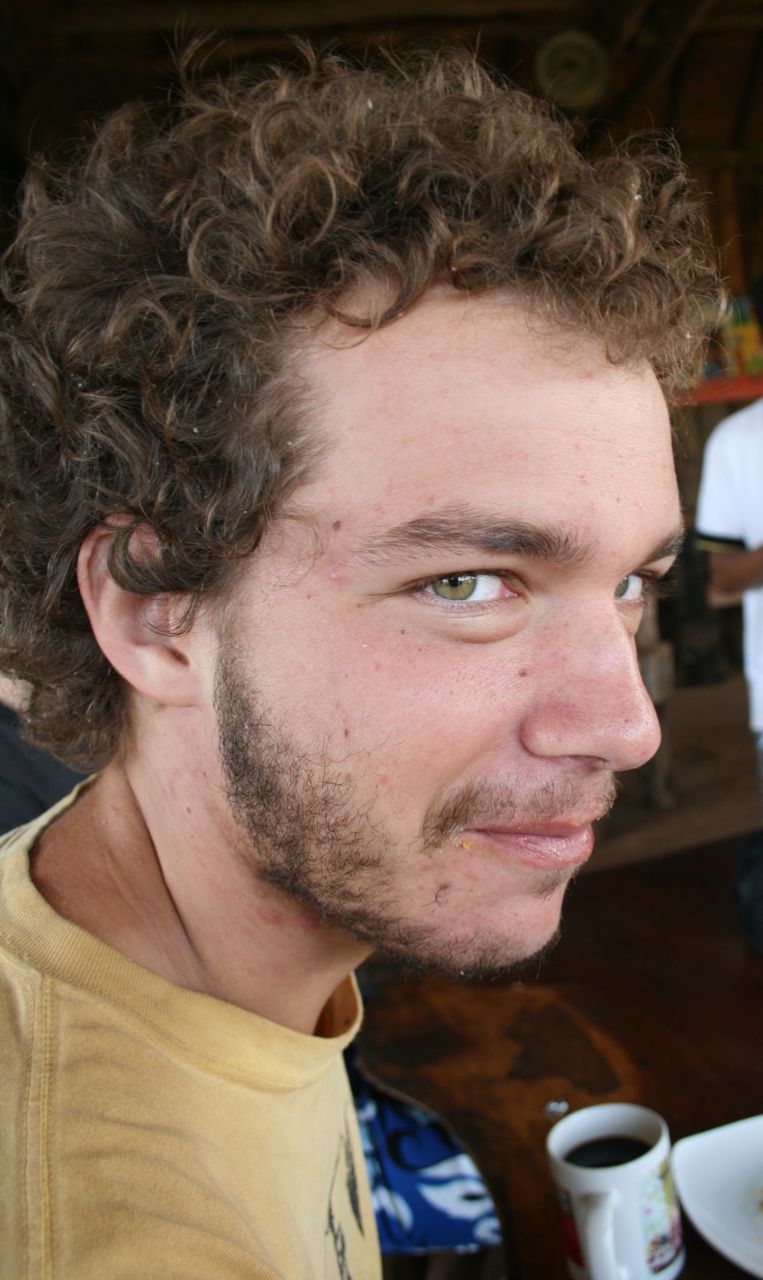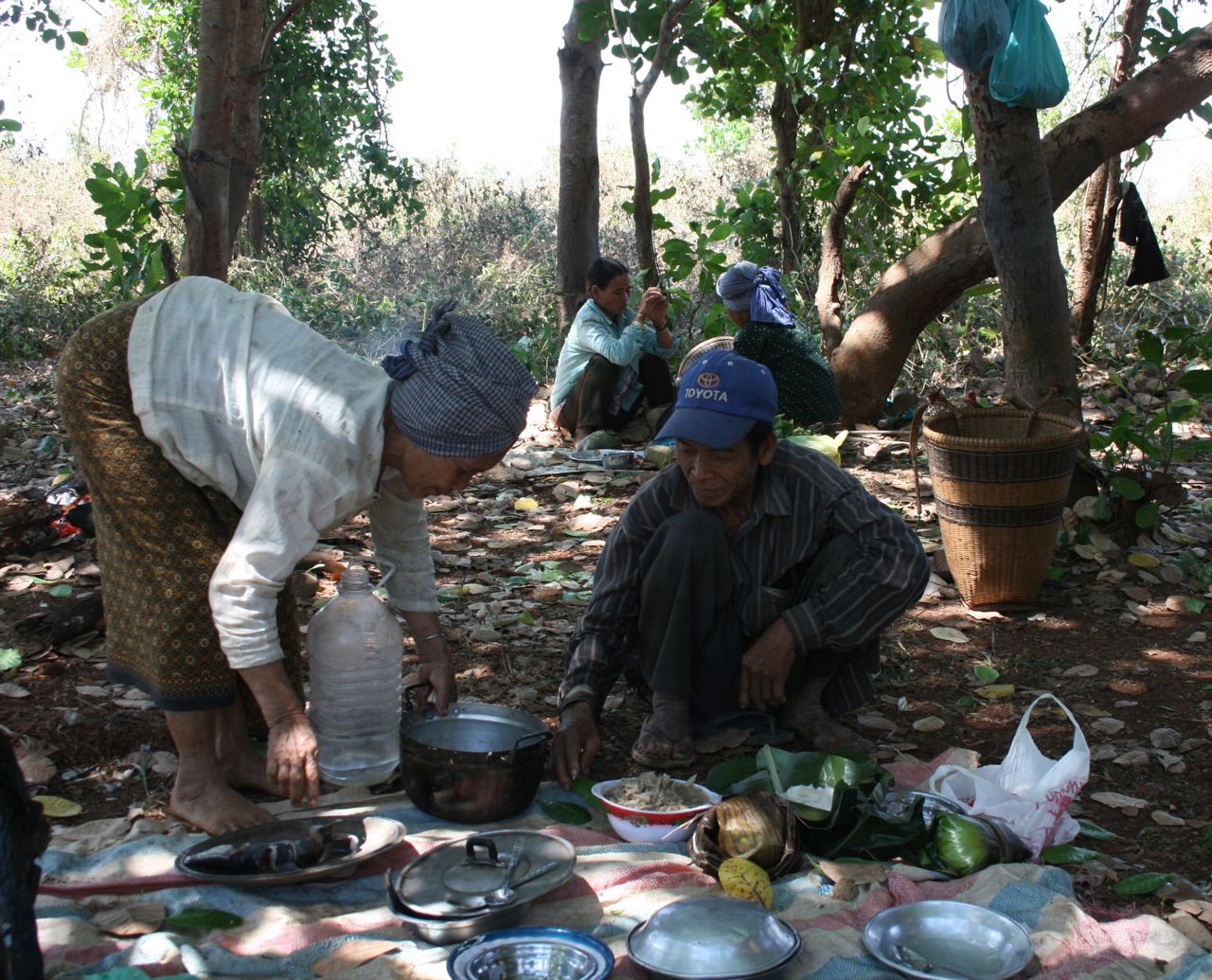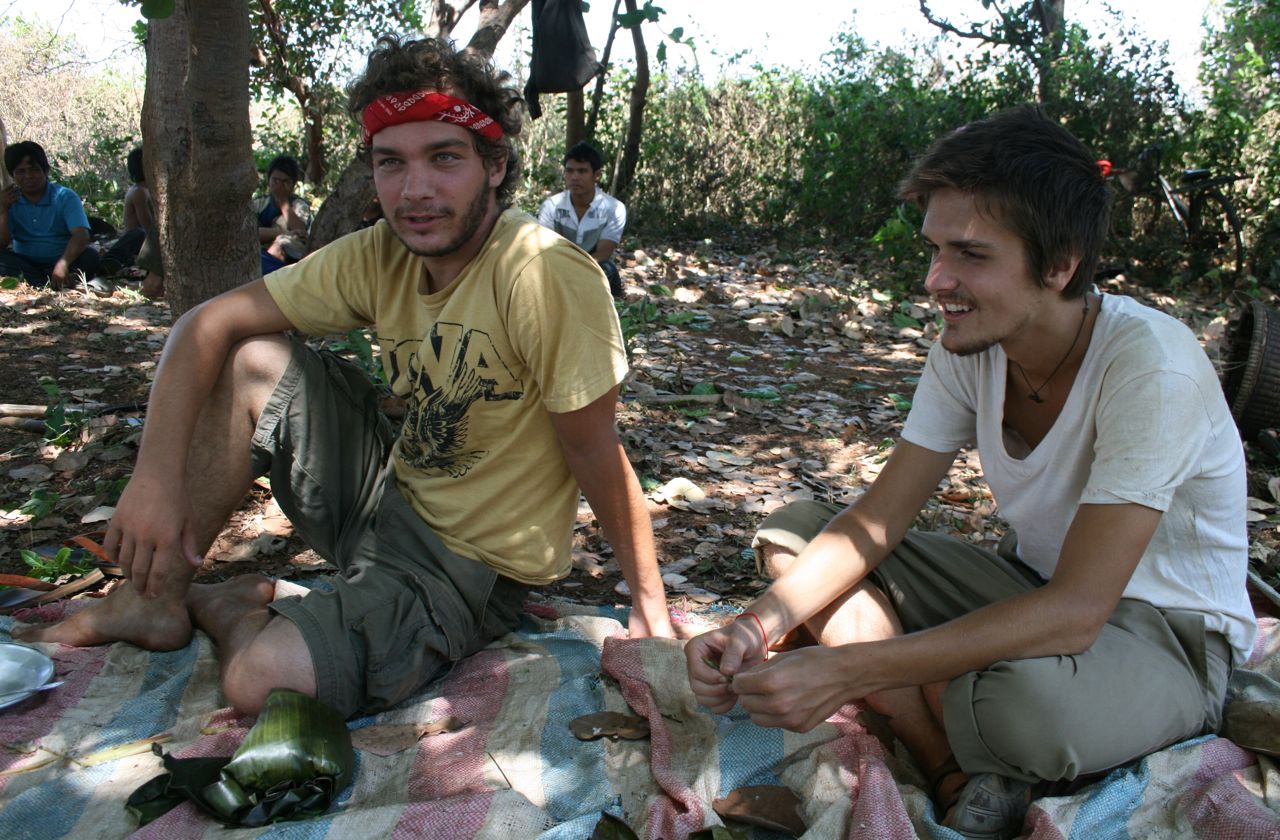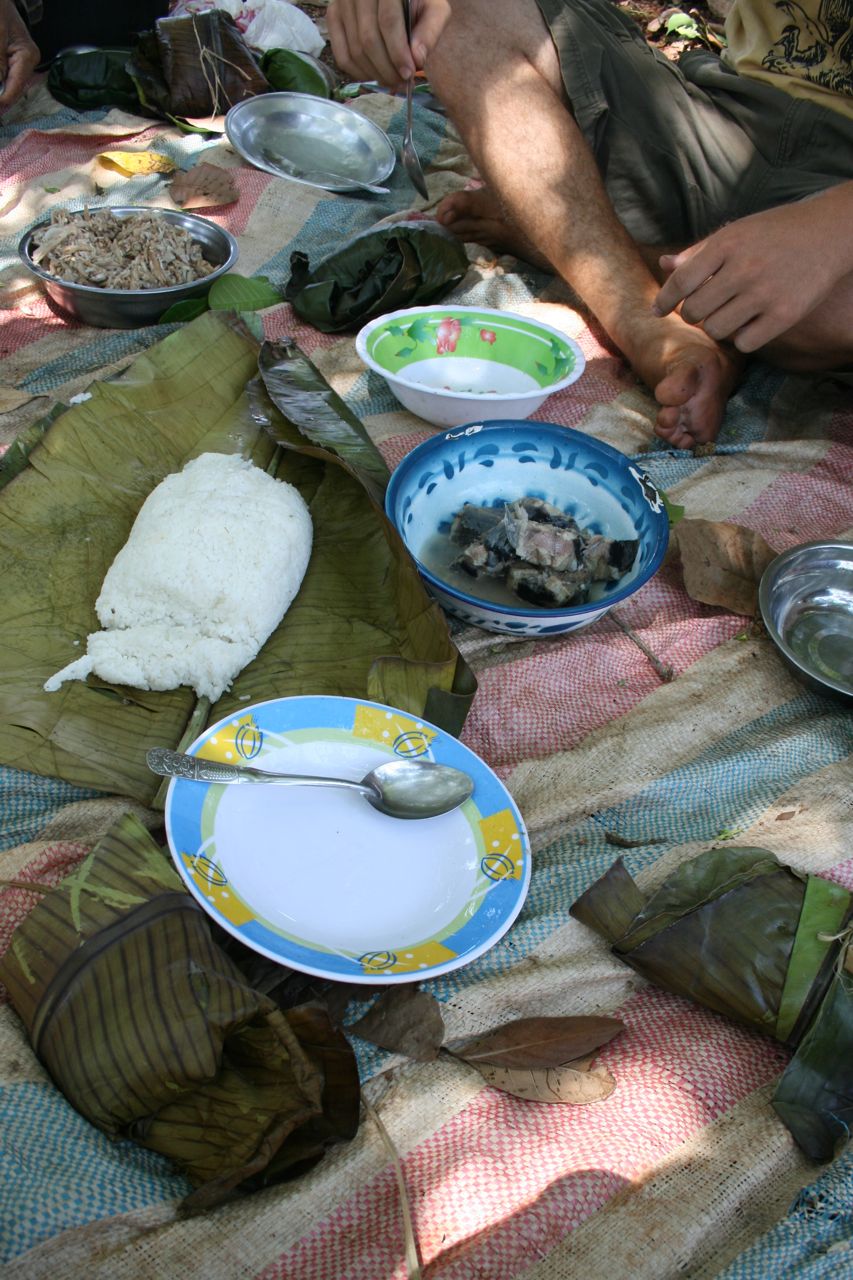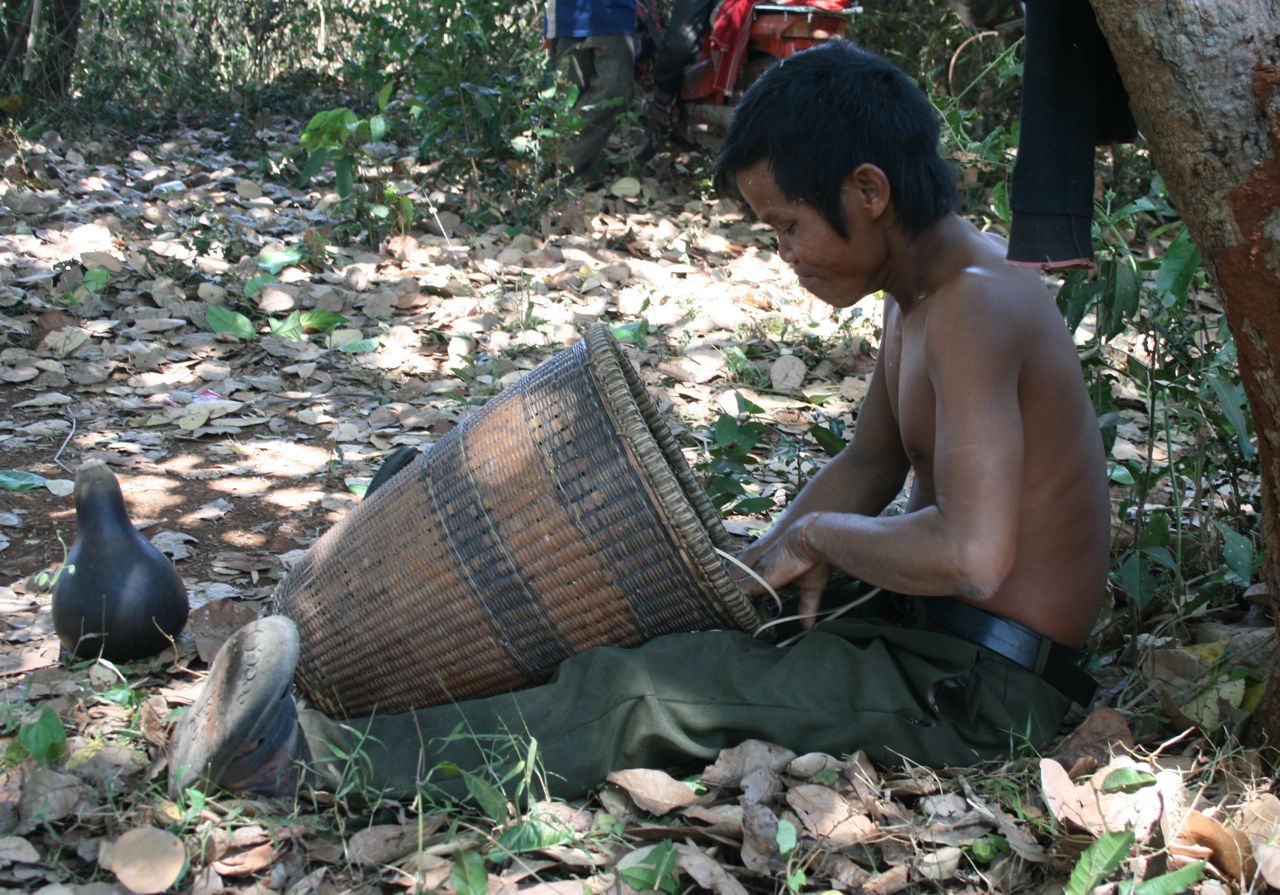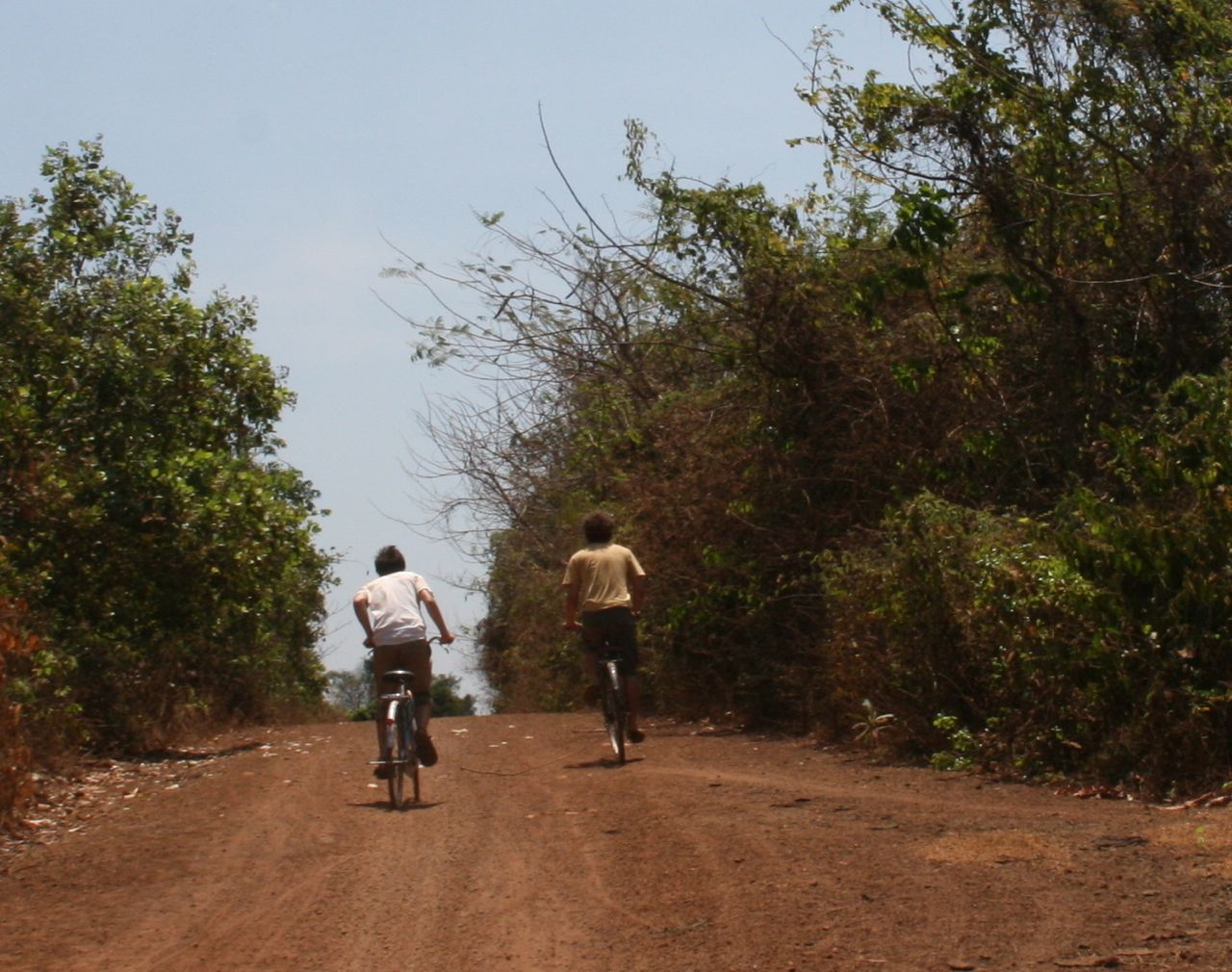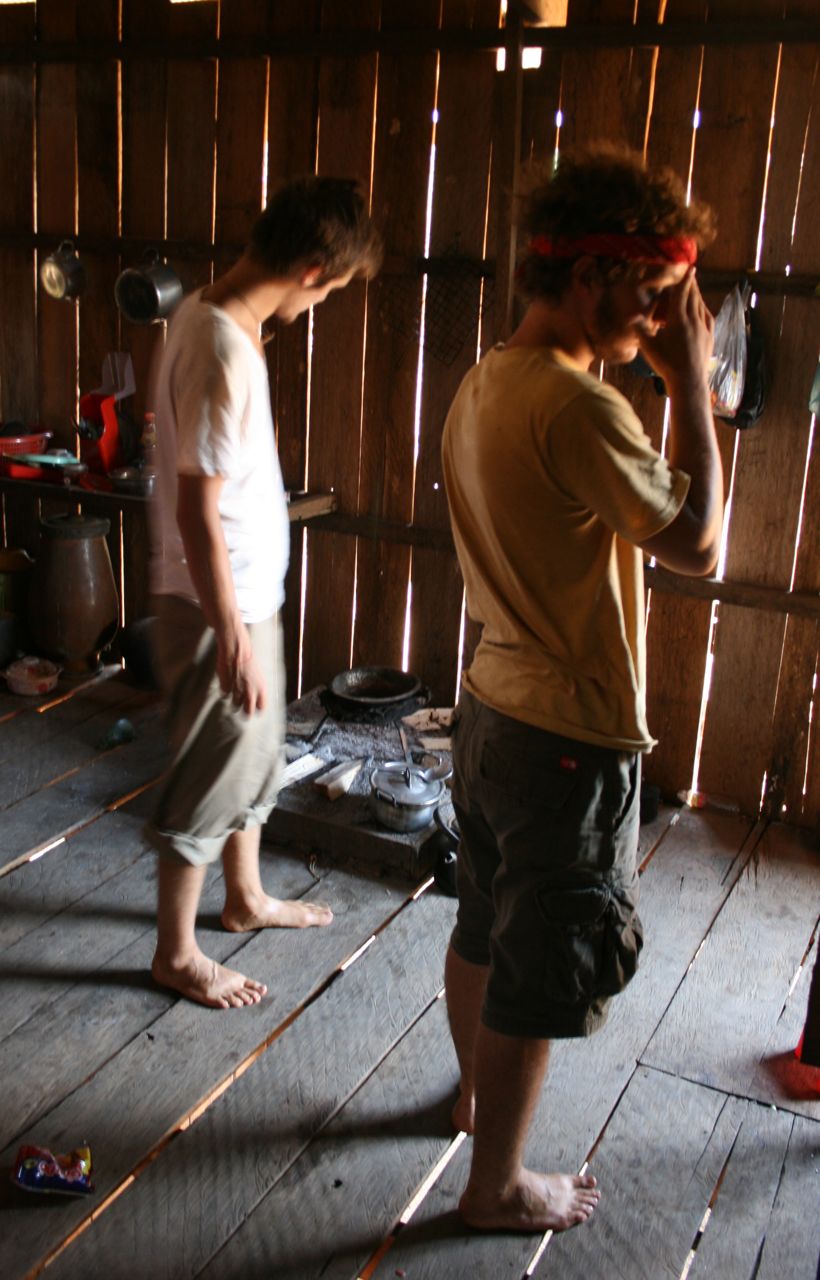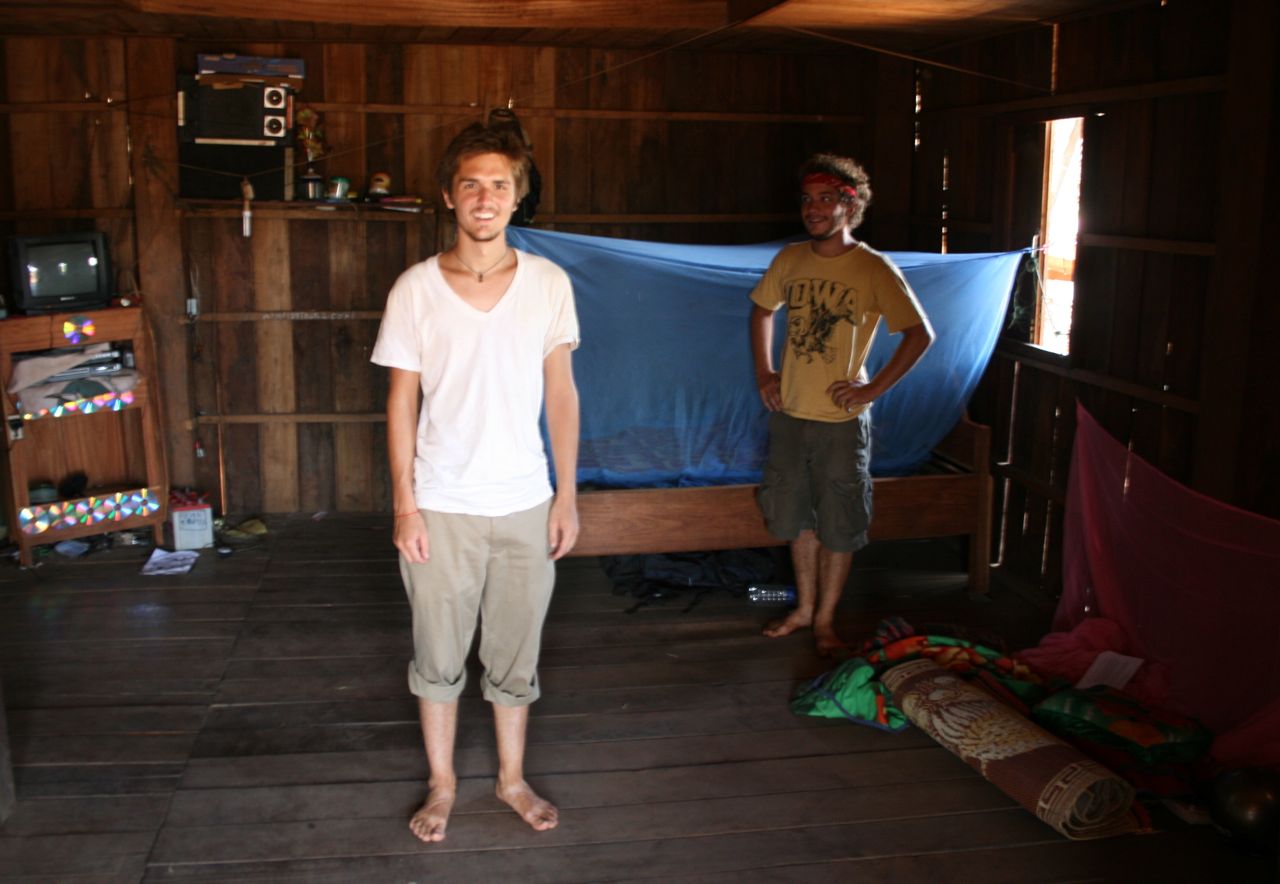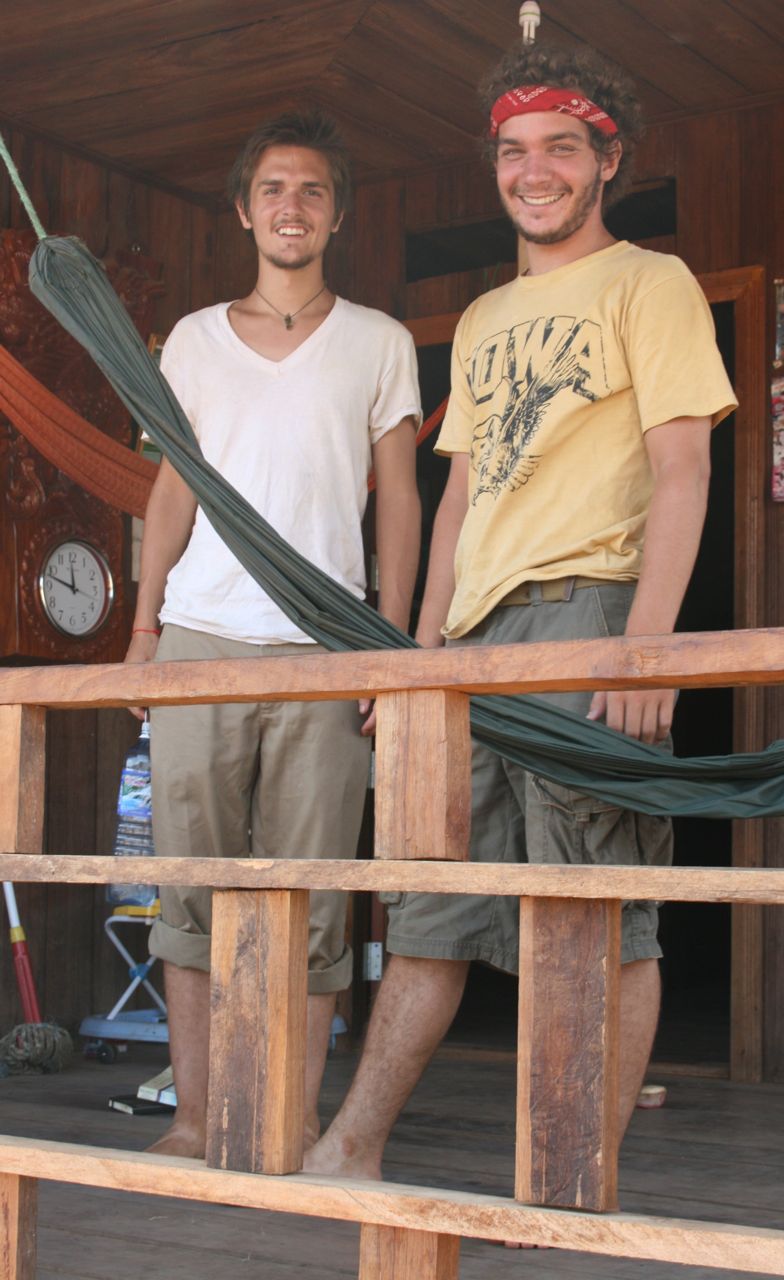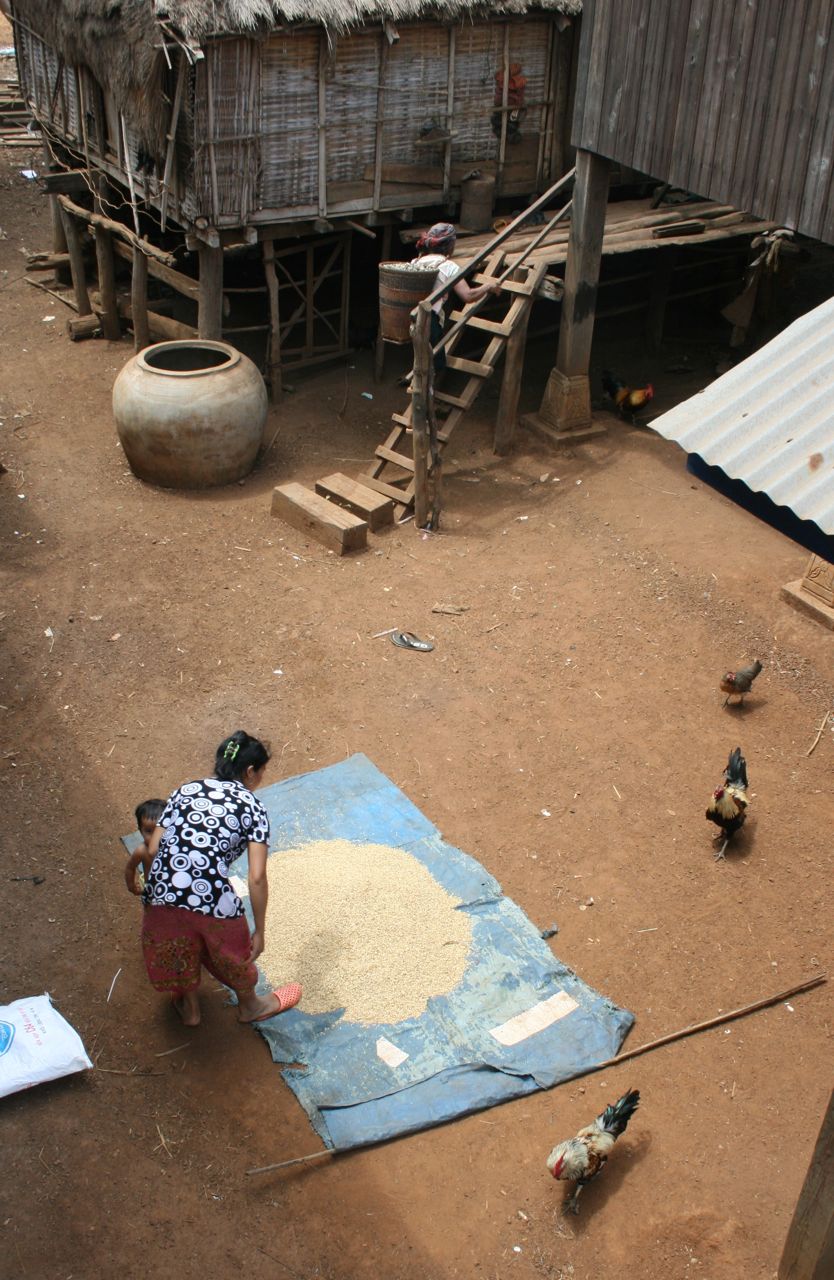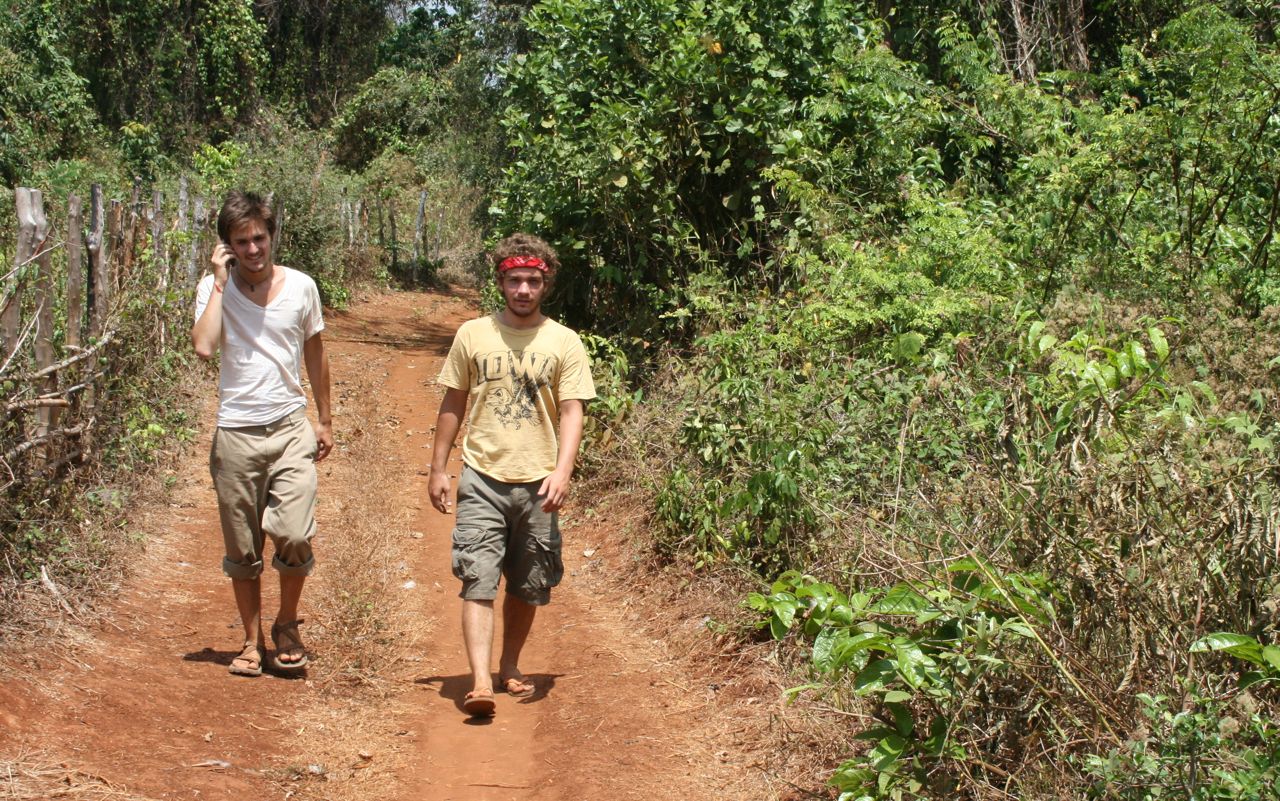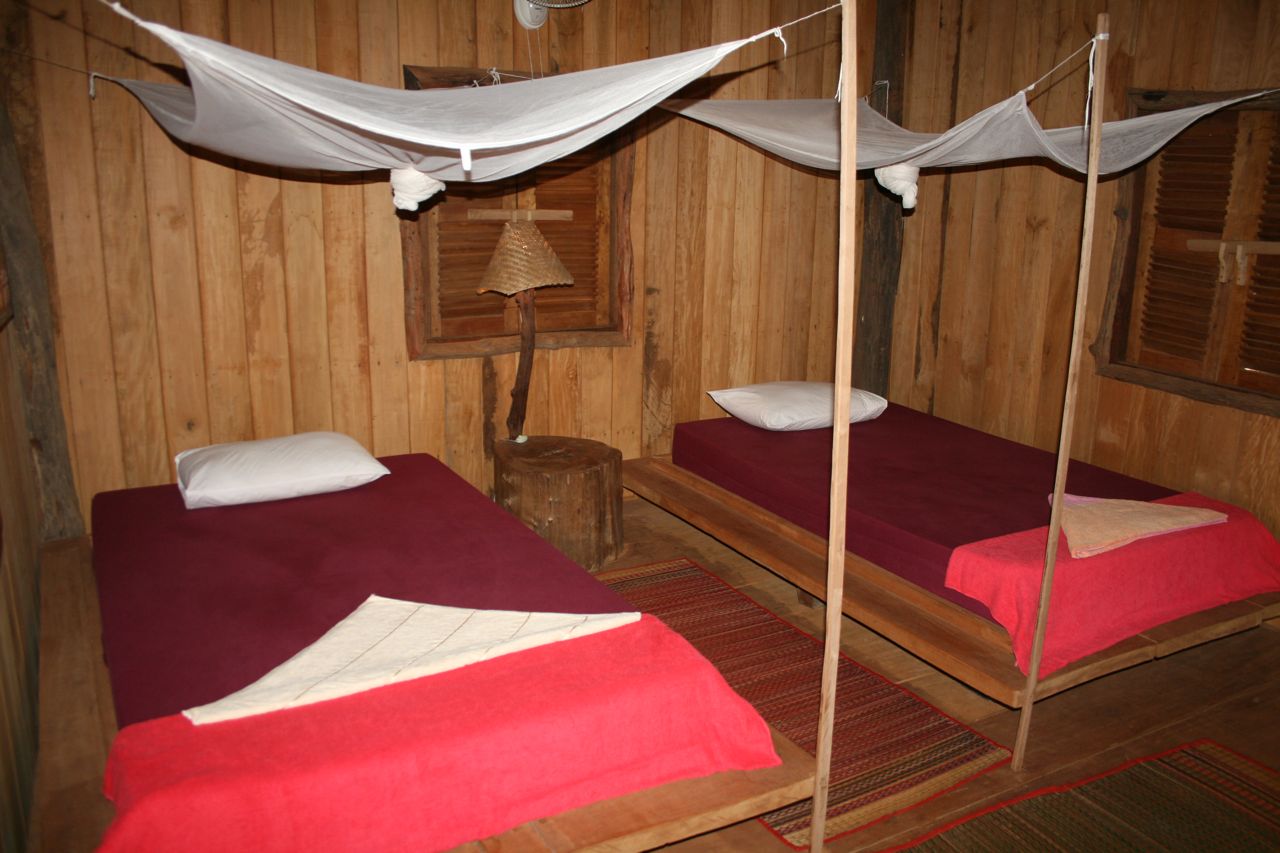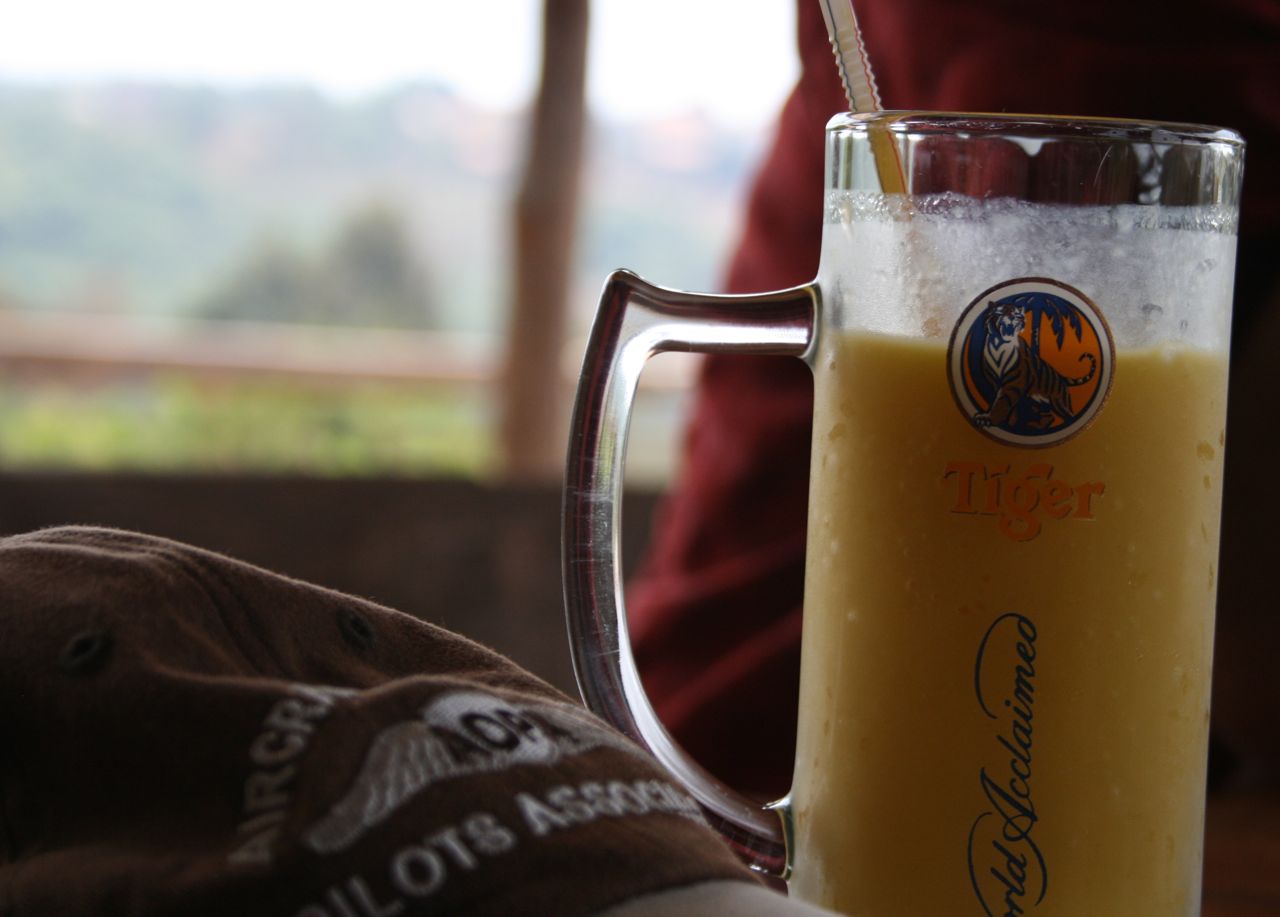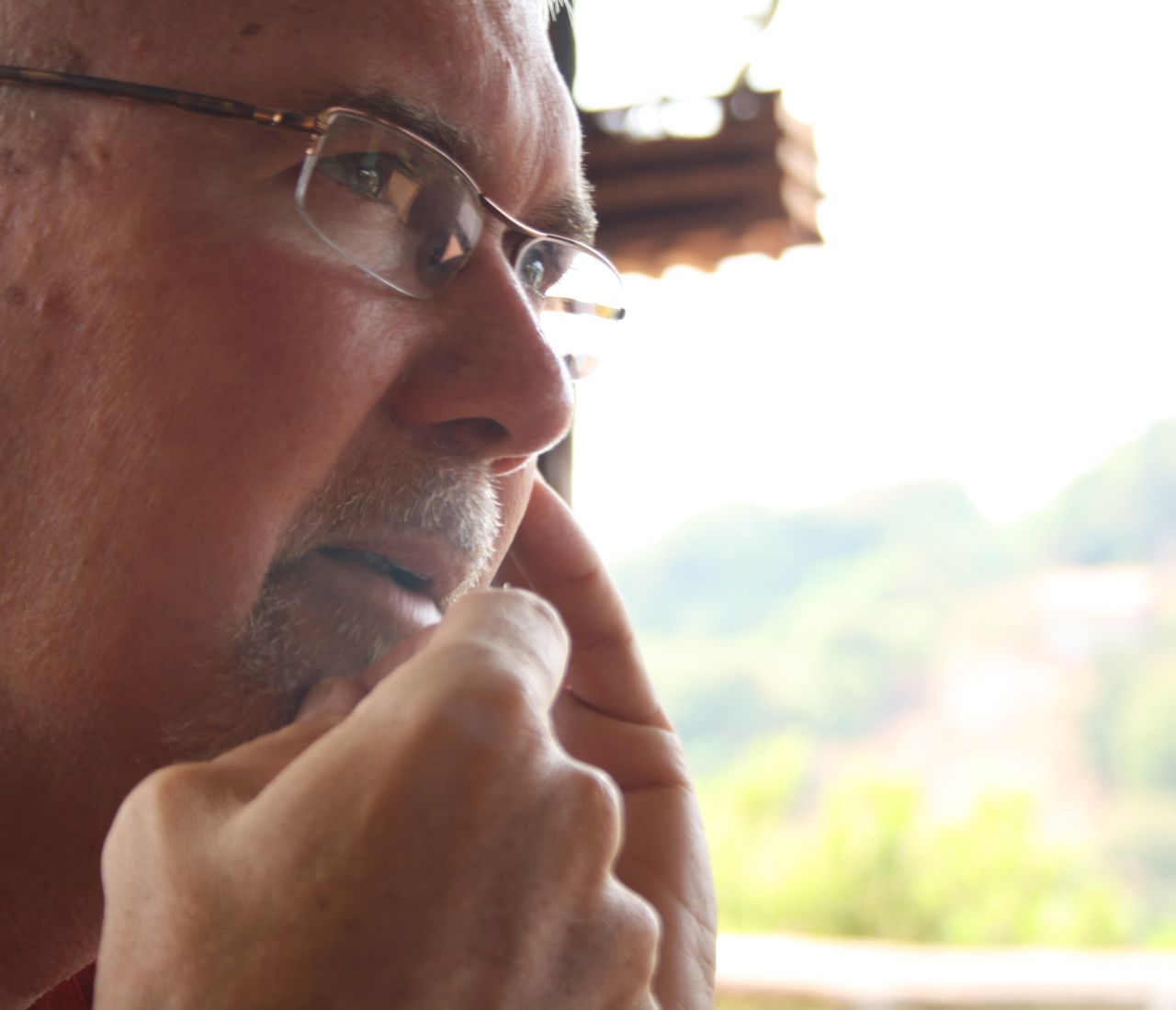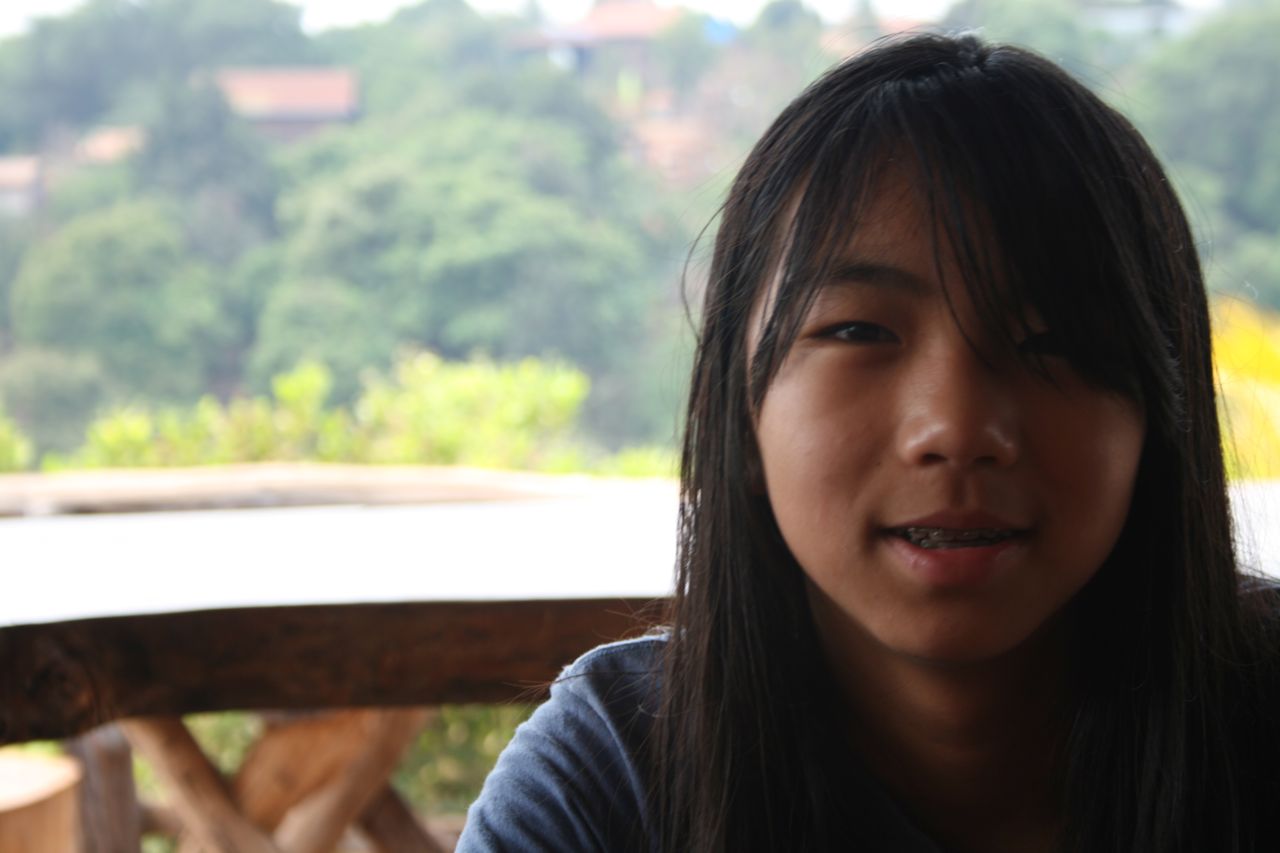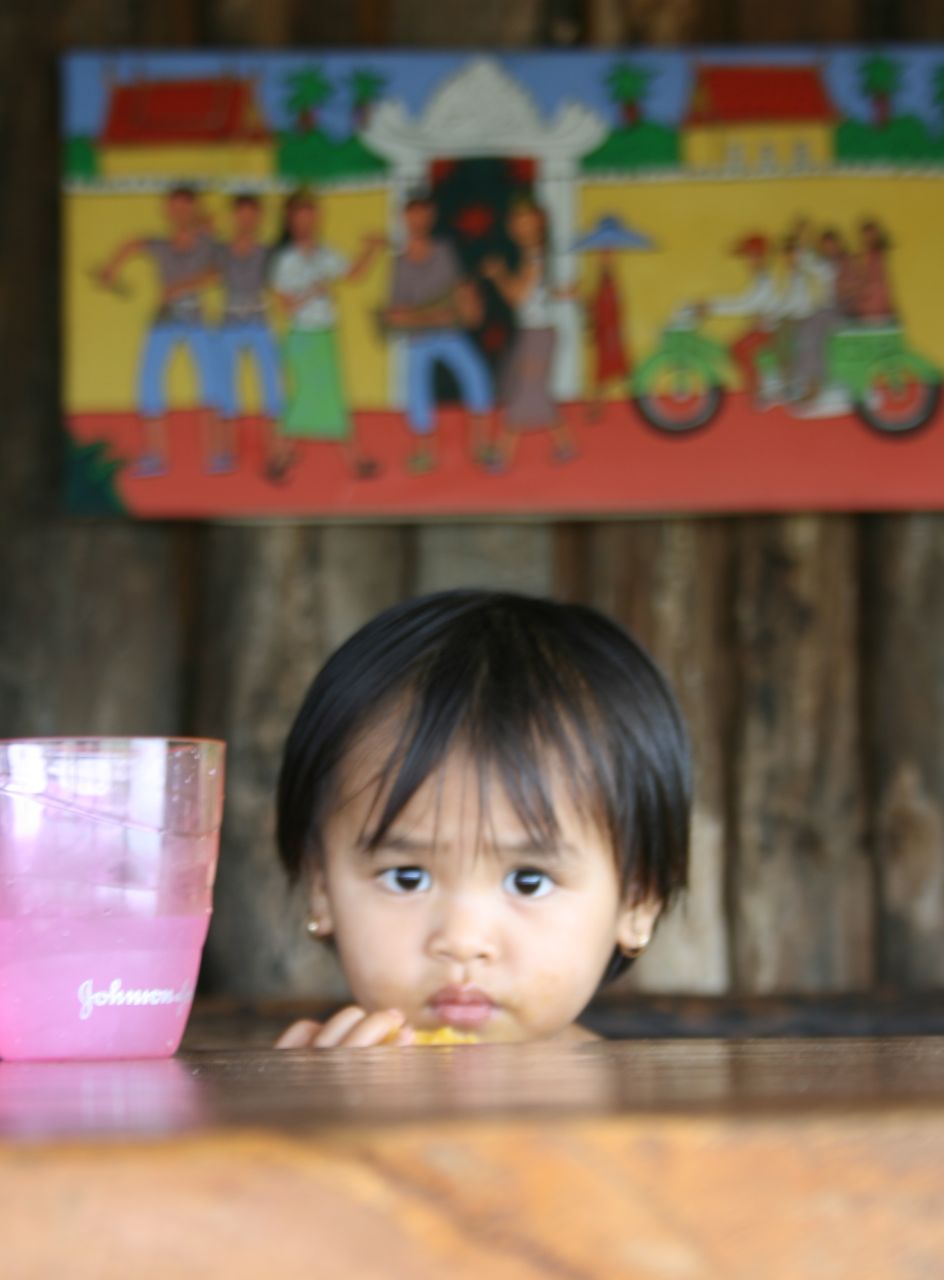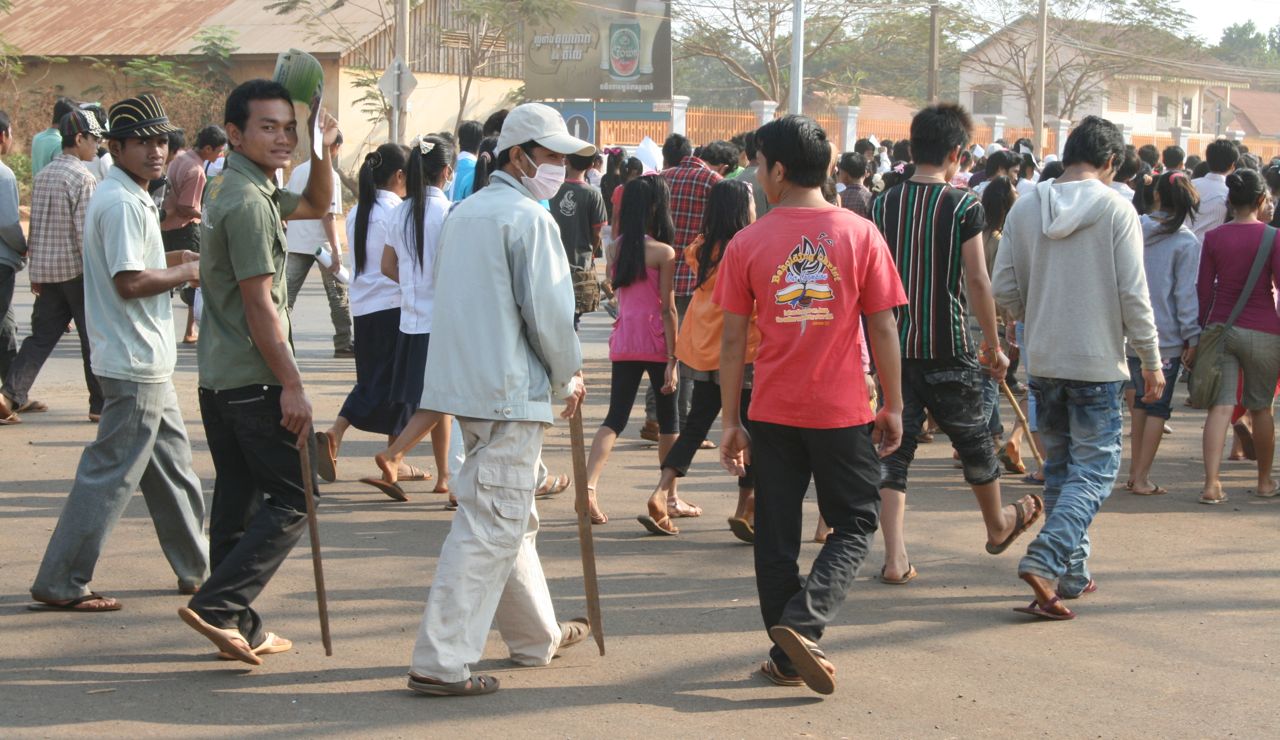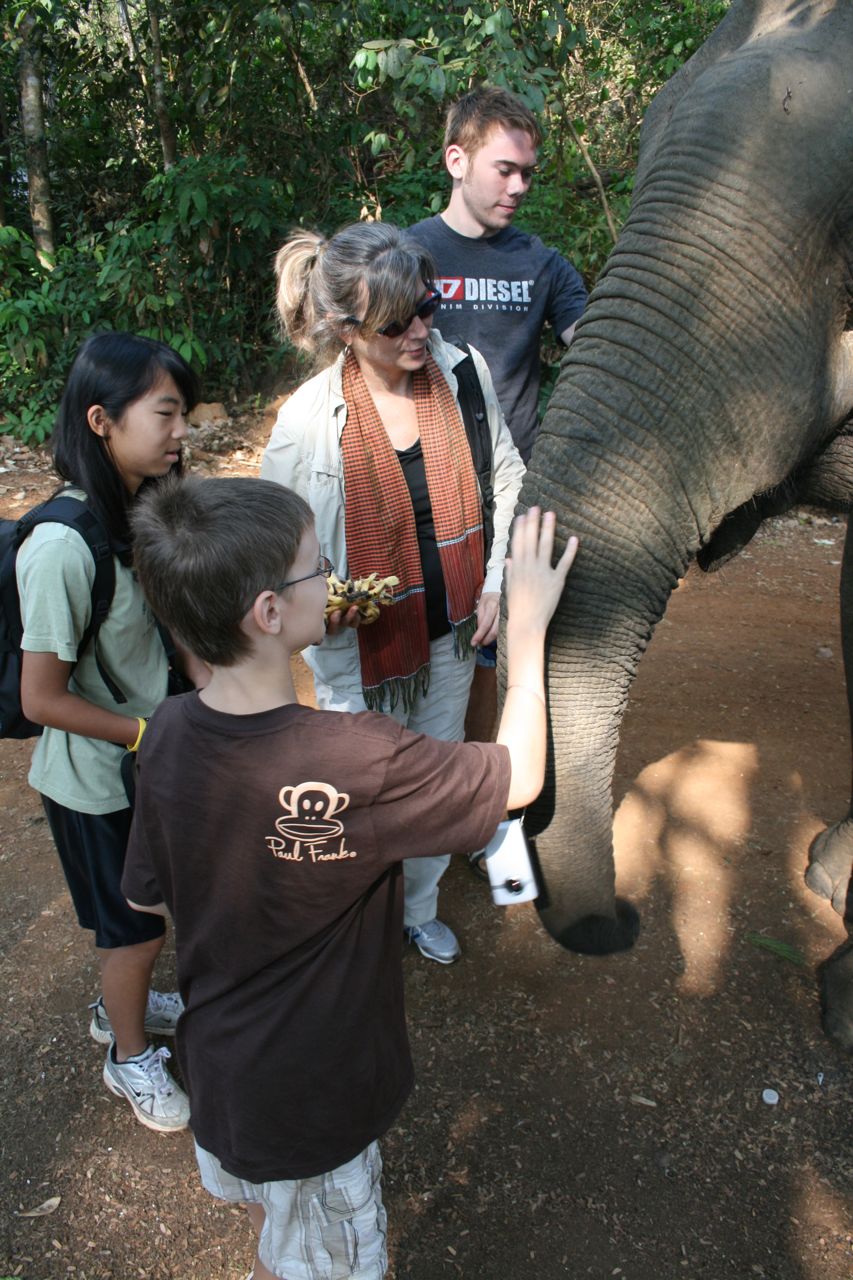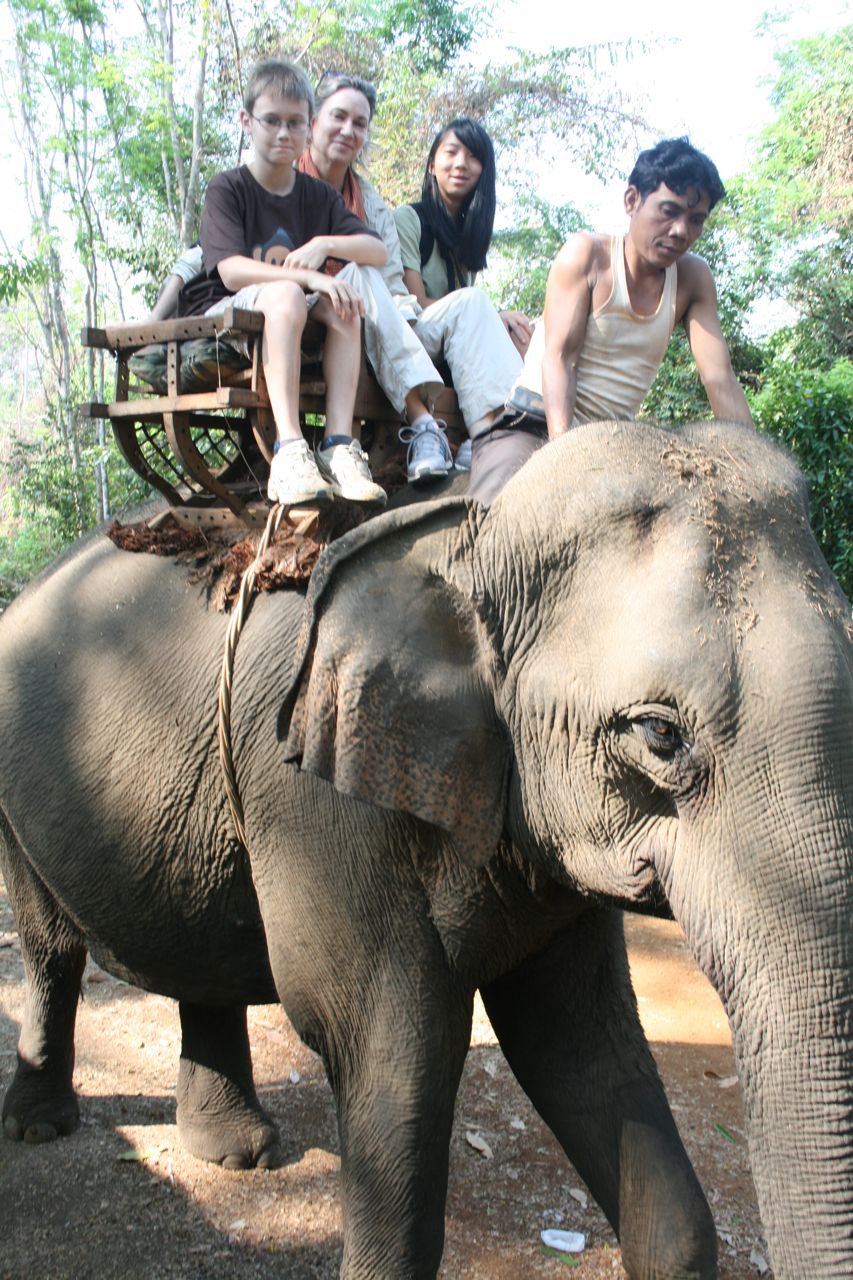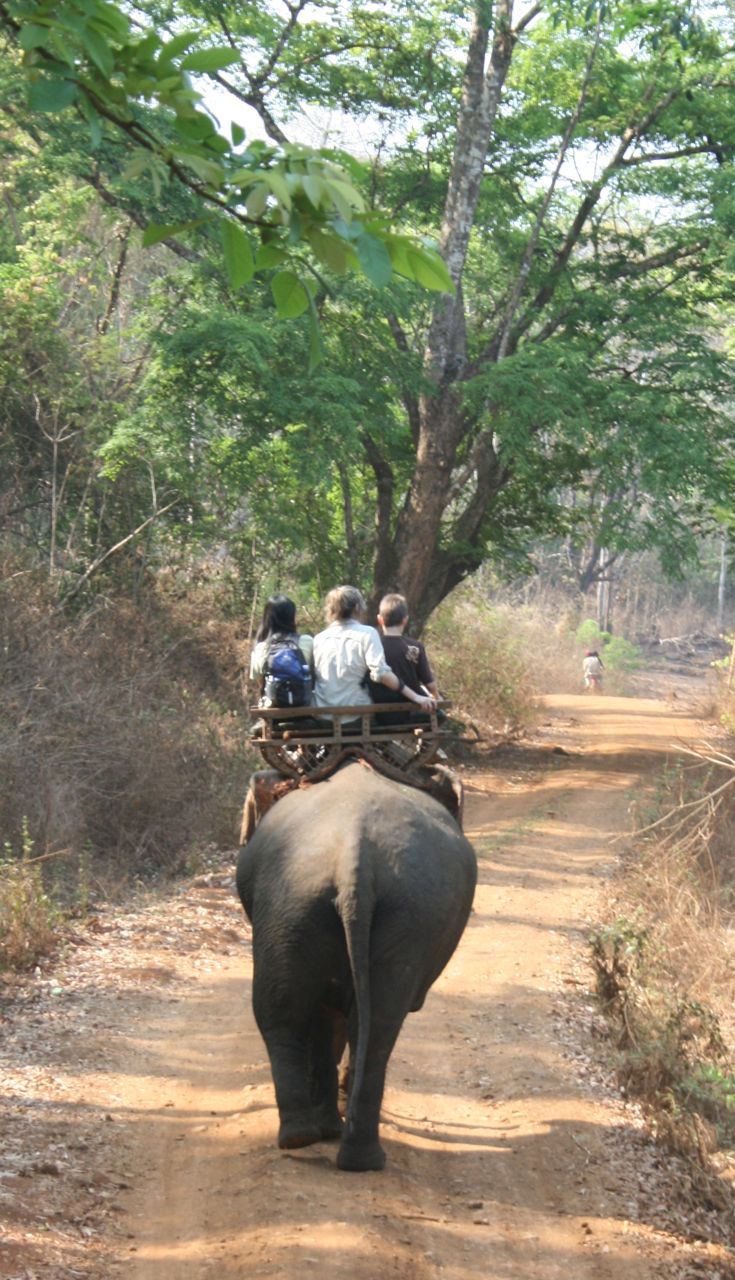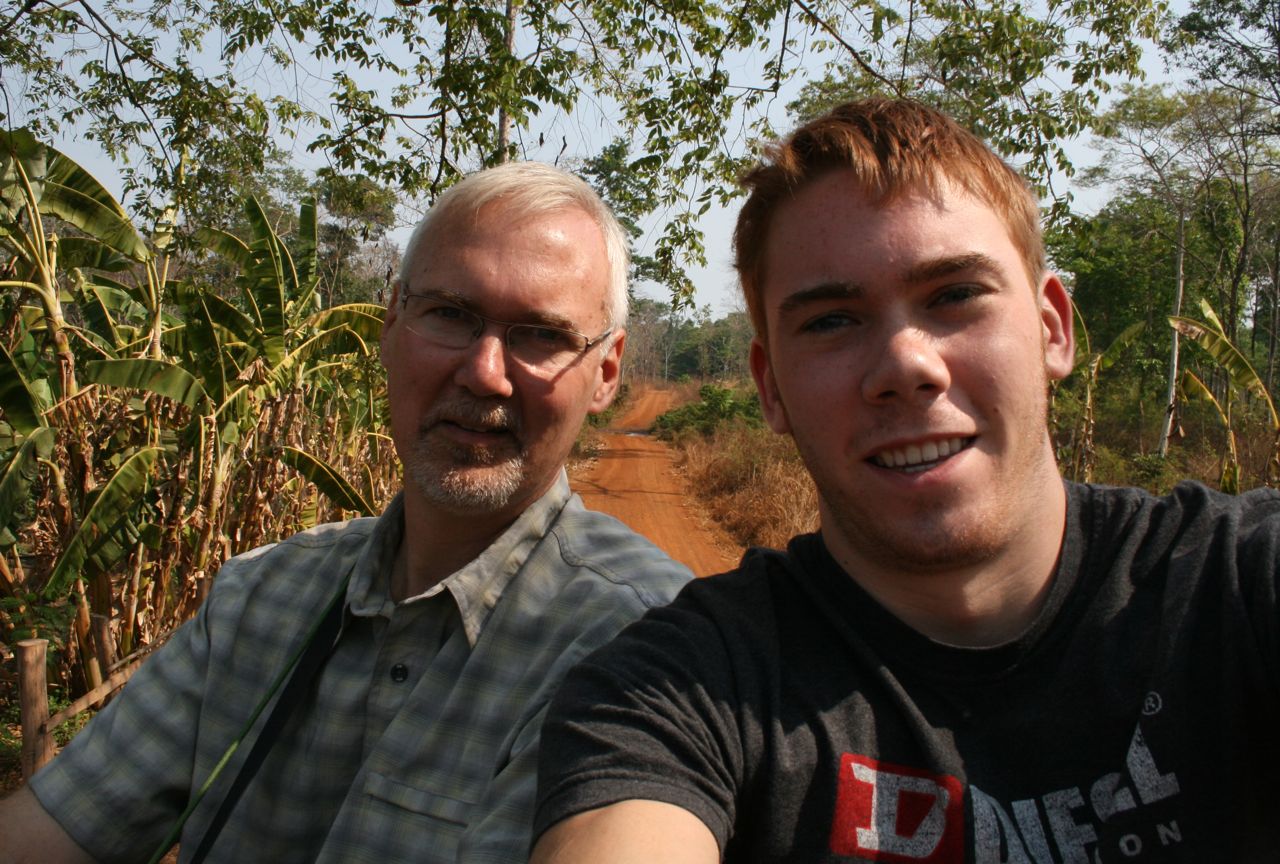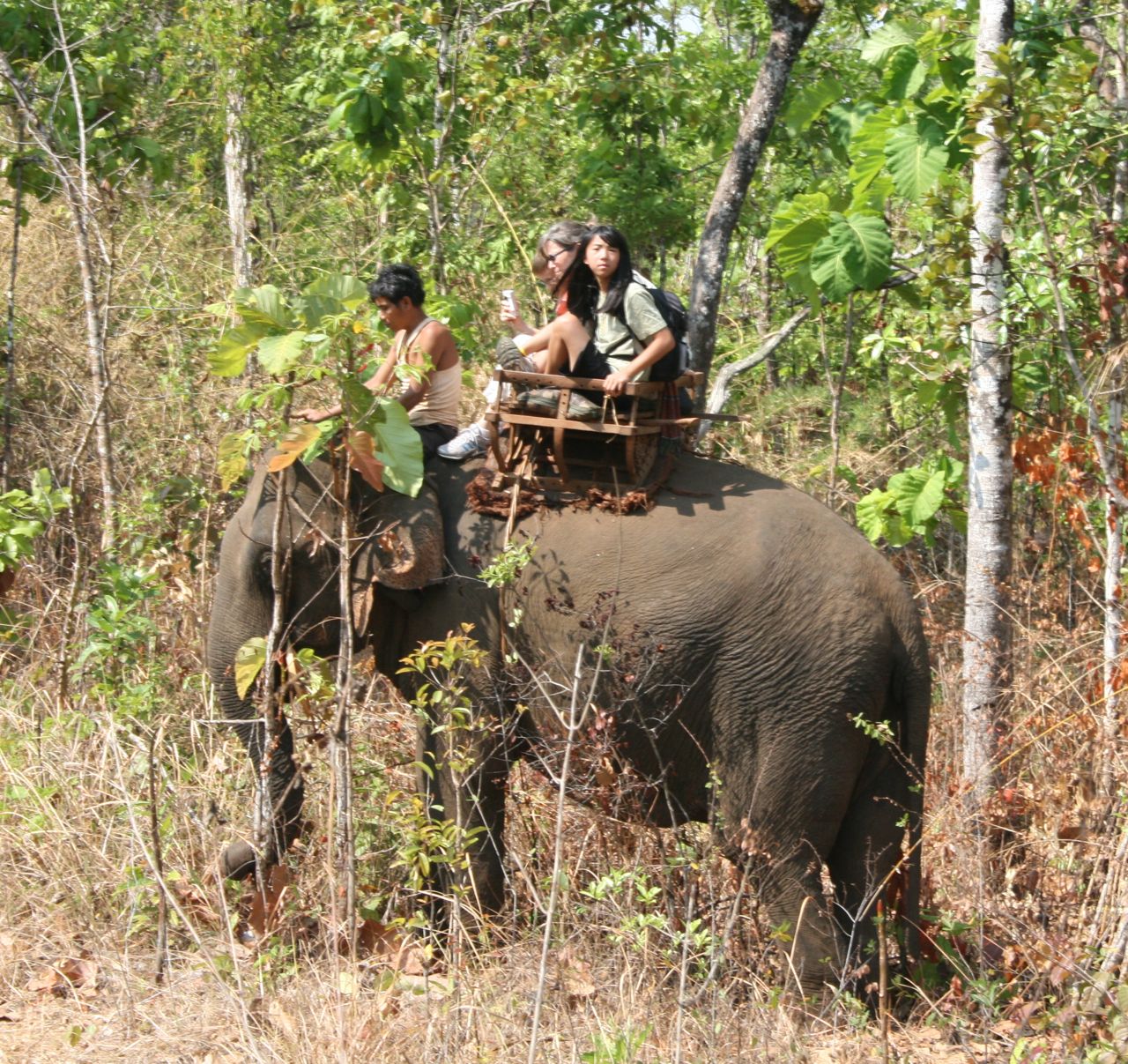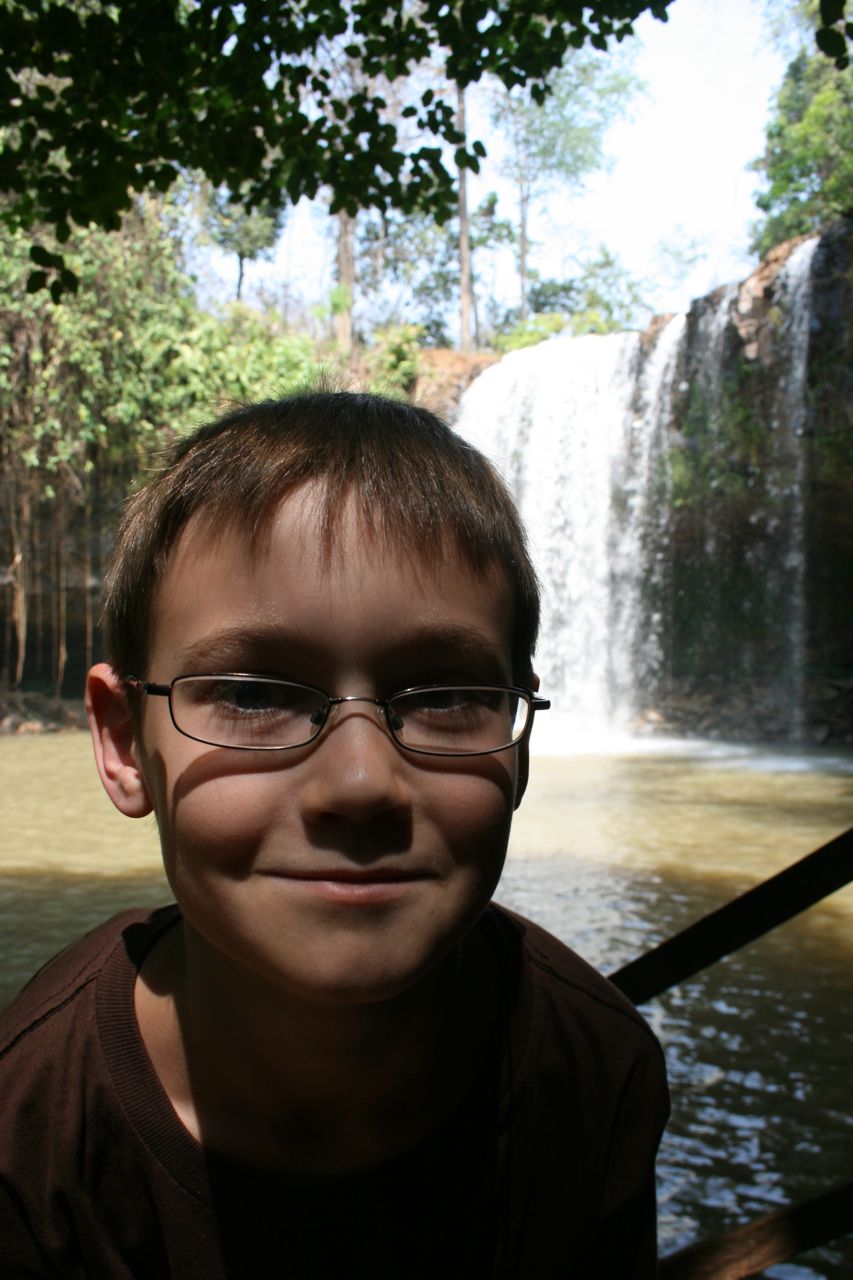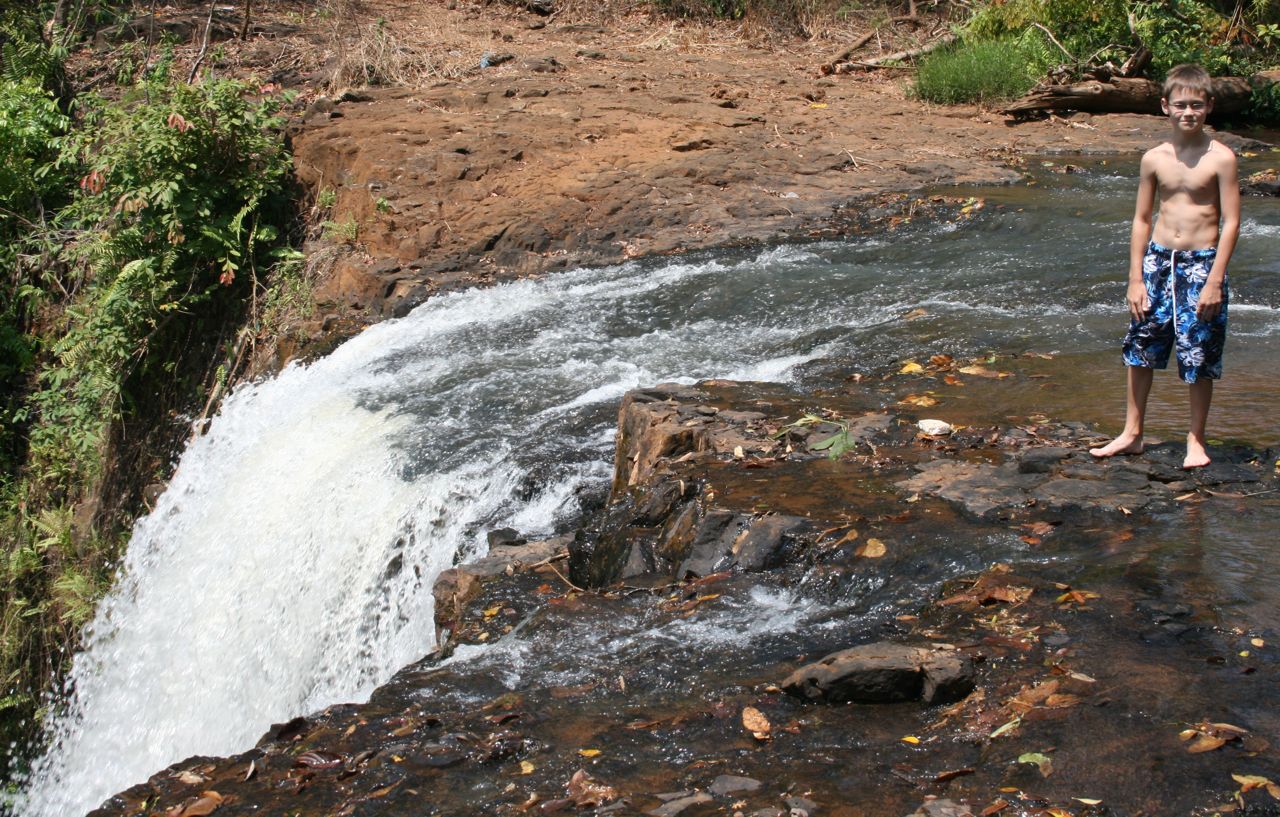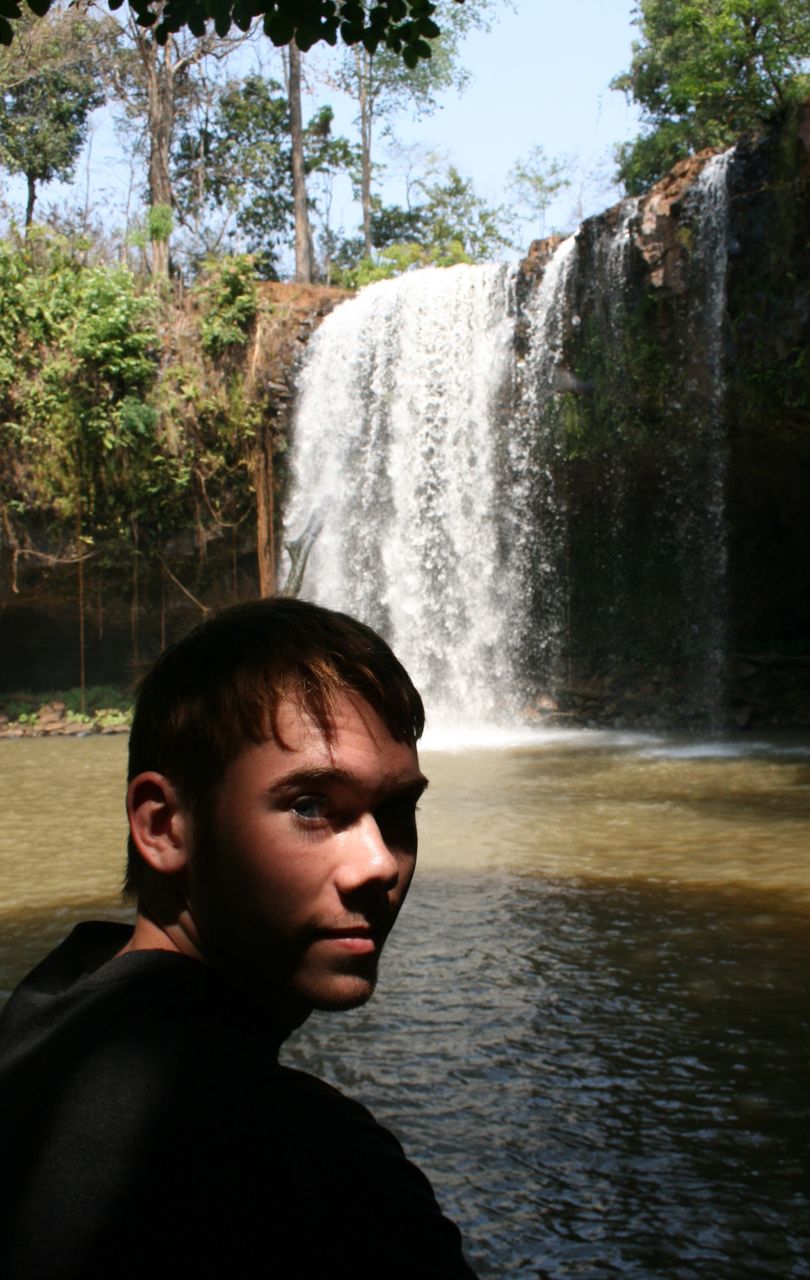Michael and Austin in Kong Yuk
Austin and Michael are living and working with a Jarai indigenous family in the village of Kong Yuk, about 50 kilometers outside of Banlung, the provincial capital of Ratanakiri Province, and just 40 kilometers from Vietnam. Some may remember the story of the “jungle girl of Cambodia,” a young woman who reappeared from out of the jungle in January 2007 after being missing for nearly two decades. The young woman is from a small village near Kong Yuk and Oyadao, and her village is where Michael and Austin are doing most of their English teaching.
Even though their days are quite slow-paced, Michael and Austin are extraordinarily enthusiastic about their service experience. Amounts of work vary a good deal from one service village to another, and Austin and Michael are clearly on the lighter end of things. Most mornings they spend reading or relaxing in their hammocks, taking a shower, and eating. Sometimes they walk through the jungle and through a bamboo forest, hearing exotic birds and watching out for something they’ve never seen but heard about: “snakes as big around as your leg.” On most afternoons they take a several-hour bicycle ride and then a second dump shower, and then wait for their fellow villagers to come back from the fields. Whenever possible, they play sei (a game like hackeysack but with a shuttlecock) or volleyball with the local boys.
Once the villagers return in the late afternoon, Austin and Michael have dinner and then hang out by the fire for much of the evening. There they teach their host father, siblings, and other neighbors English words while they learn Jarai terms. Sometimes Michael pulls out the guitar he purchased in Phnom Penh and plays Western songs for the villagers, who then respond by retuning the guitar and then playing Jarai songs.
Austin and Michael absolutely love their Jarai host parents, whom they call by their confusing Tampoun names — “Ma” for Dad and “Me” for Mom. As is true for many indigenous (and other) Cambodians, their parents are not sure of their ages, though they appear to be in their 50s. Their food tends to be simple. The day Keith visited we ate on a tarp out in the field where villagers where working — under a canopy of cashew trees. The meal included rice brought to the site wrapped in banana leaves; unripe jackfruit stripped and warmed over an open fire; and fish head soup briefly cooked on the fire. Most of the time Austin and Michael don’t have any meat with their meals, so they ate ravenously when we took them back into Banlung for the night. As did their Tampoun peers, they stayed at the Tree Top Ecolodge, a series of bungalows set on a verdant hillside. Banlung is abuzz with activity in preparation for an international conference taking place at a local school this week. On Thursday school-age children and teens thronged the streets cleaning up bits of trash since both Vietnam and Laotian representatives, as well as Prime Minister Hun Sen, will be present for the conference.
Both of the men left their razors at home, so they are now sporting “jungle boy” head and facial hair. They are quite pumped about their village experience, and looking forward to their recently begun formal teaching in the nearby village. Their village, site of one of the major land-grabbing cases in Cambodia (government officials and international corporations taking Jarai land), is one Goshen grad Daniel Lanctot has worked with extensively, and Daniel helped us arrange for the site.
The morning Austin and Michael went back to Kong Yuk, the Graber Millers took a 90-minute elephant trek through the jungle, stopping at the Katieng Waterfall at the end and swimming briefly in the frigid waters. Mia and Simon loved the elephant ride and the waterfall, as did others in the family. After that we headed southwest toward Kratie, stopping repeatedly along the way with radiator issues before settling into Kratie for the night before heading on to Kampong Cham Friday morning.
